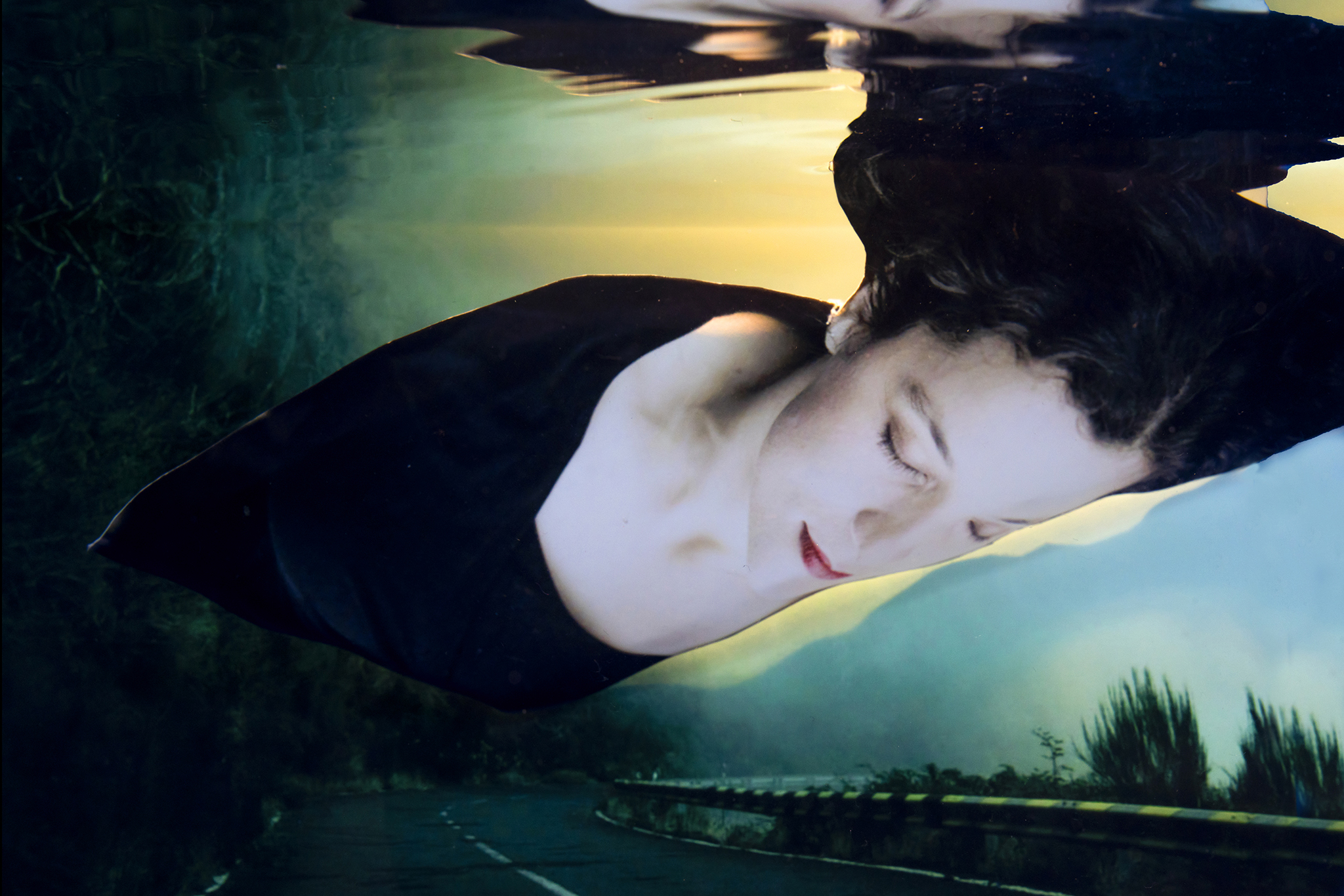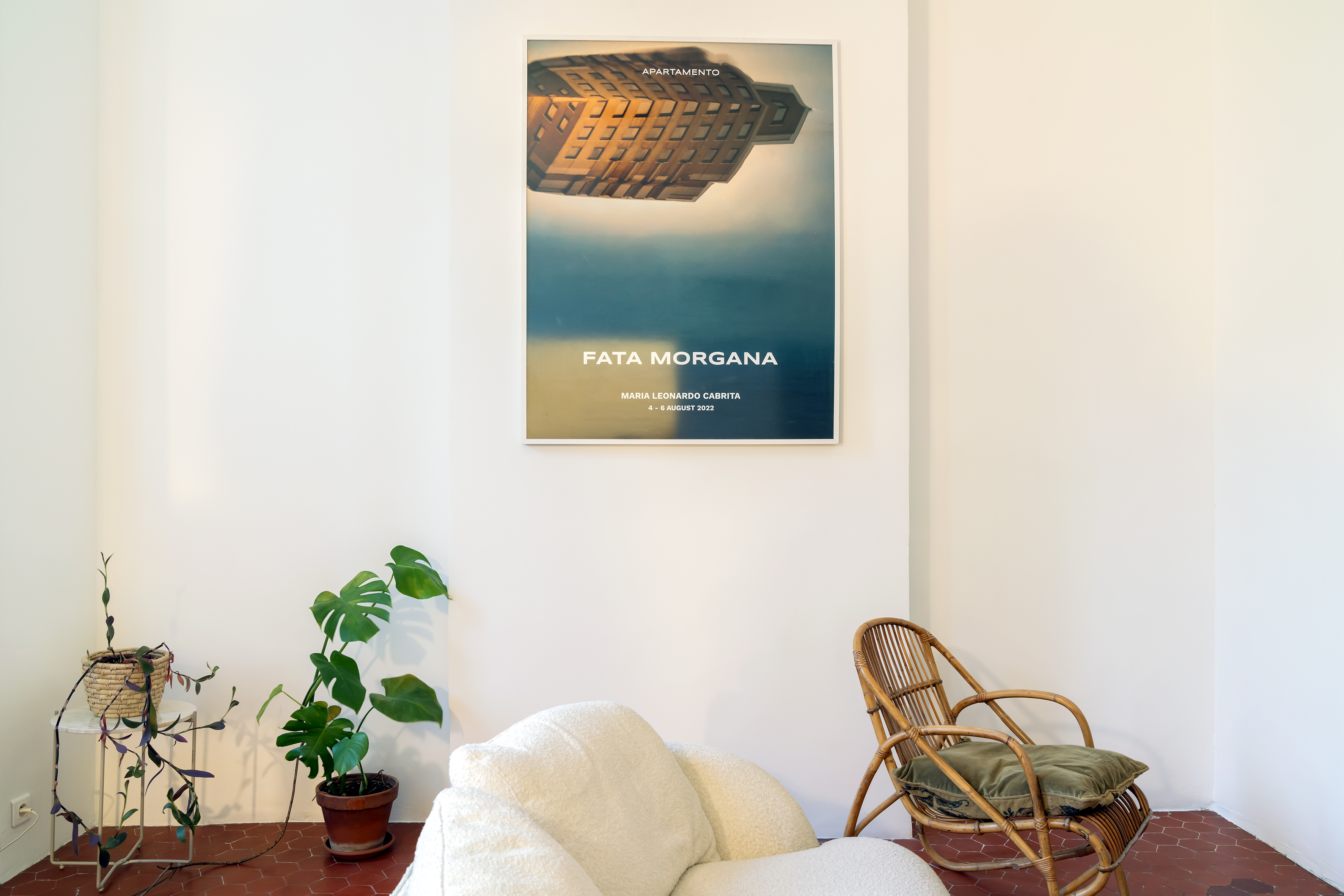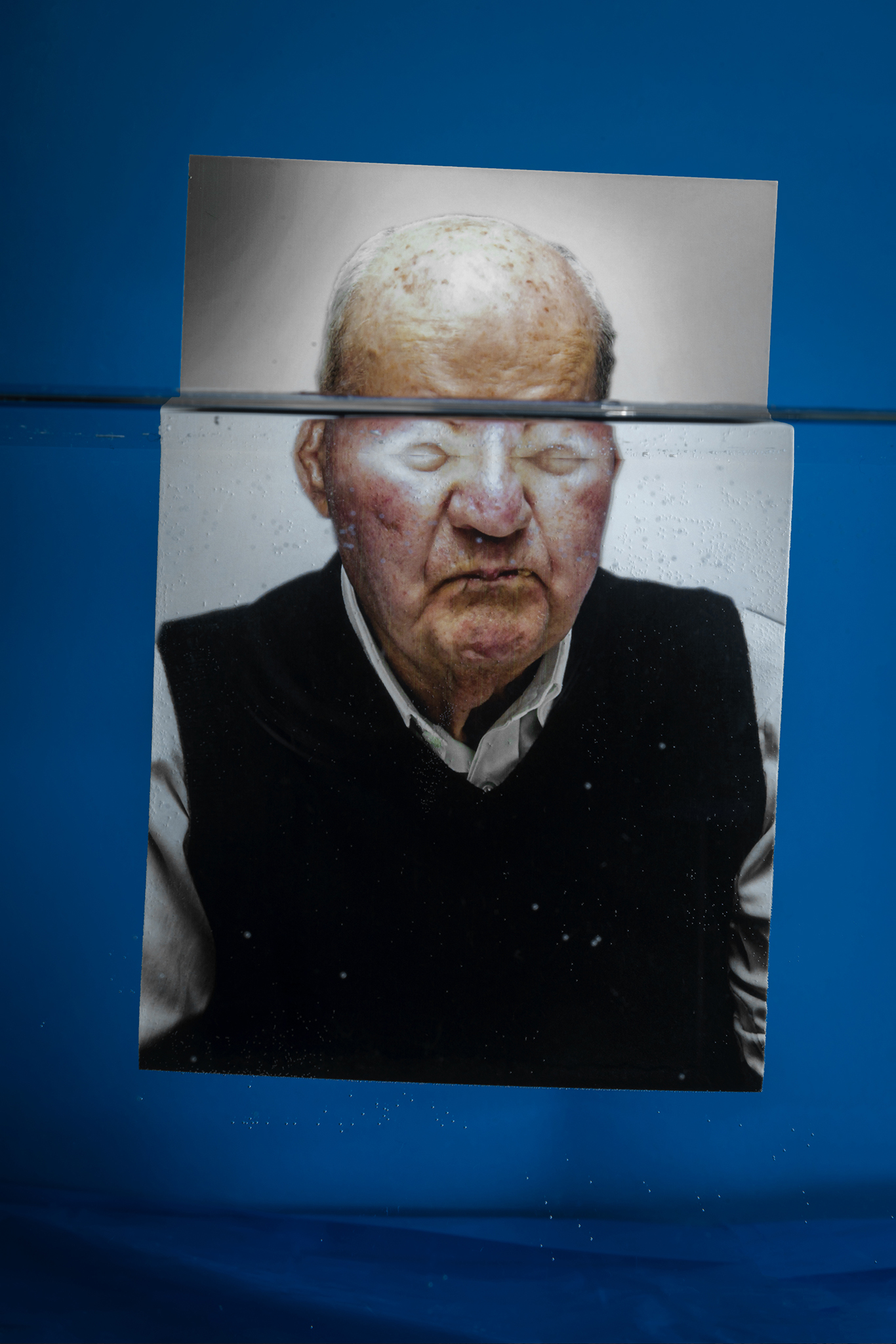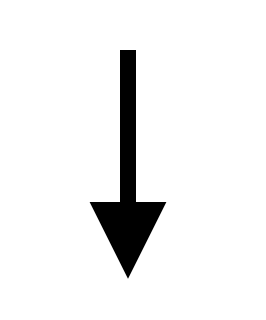Fata Morgana
![]()

2022





Fata Morgana is an audiovisual installation that gathers Maria Leonardo Cabrita’s photographs. Exploring Fata Morgana’s different layers of meaning, the artist uses anaquarium to reproduce the wonders and illusions of light refraction.
In June 1 1798, Napoleon and his troops invaded Egypt. On the way to Cairo, they traveled through the Sahara Desert not knowing that the sun could kill a man. In the vastdesert, they saw distant lakes that seemed to promise an end to their anguish. They speeded up their pace only to see paradise fading away and receding at their approach. These lakes were mirages and many of these soldiers died of heatstroke and thirst. It was also on this trip that this optical phenomenon was studied accurately in Western Civilization for the first time by Gaspard Monge. Thus, today we inevitably link mirages with a tradition of fatalism and an underlying effect of colonization. Fata Morgana is a superior mirage produced by the downward refraction of light passing through a temperature gradient of warm above cold air. When the curvature of the light rays is greater than that of the earth, this optical phenomenon generates an image of a blurry object above the horizon. This effect occurs in extreme atmospheric conditions and it is most commonly associated with the desert, but also with the sea and polar mountains. Named after Arthurian sorceress, Fata Morgana - Morgan Le Fay - is a medieval mythological figure that has an ambivalent nature representing both healing and protection, as well as seduction and war, trapping sailors into a deep abyss. Morgana inhabited the mystical and unreachable island of Avalon in the Strait of Messina between mainland Italy and Sicily.
Fata Morgana inspired the creation of legends such as the Flying Dutchman; myths of fairy castles, sirens, antelopes running for water, among others. It is also inevitably associated with many failures of science. Deceived by the fragility of human sight, many scholars and experts mapped, sought and chased lands that actually never happened to exist.
Mirages have been the central point of Leonardo Cabrita’s research. Since 2019, the artist has been creating her own mirages through photography, the main medium of her artistic practice. She has also been increasingly interested in the relationship between mirages and photographs, since they both share a fraudulent and phantasmagoric nature, derived from reality but not entirely accurately; thus, shaped by a distorted perspective of it, and also grasping an ephemeral and unrepeatable moment in time. The resulting titanic images of this installation travel through optical phenomena, the wonders of light refraction, fairy landscapes, as well eyeless or faceless portraits of human figures who seem to be sinking into the unknown. Among these portraits were chosen surviving soldiers who fought during the Portuguese colonial war. The sound was createdto accompany the installation. Mixing elements, such as windstorms, magical xylophones,heart rhythms, whales, and sounds of the current war, among others, the viewer has anopportunity to travel through the piece. Fata Morgana was created as a means of reflection of today's historical moment, too uncertain to be real or to bear. Are we living in a mirage?




